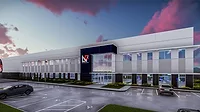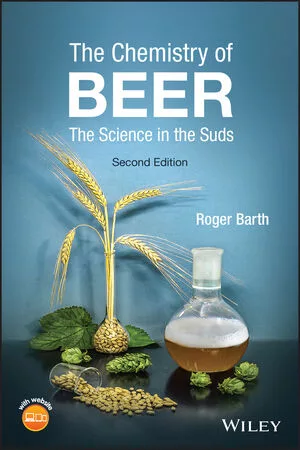Nor-Cal plans for the future
Anaheim plant reflects co-packer’s investments
To continually improve its capabilities as a contract packager, Nor-Cal Beverage Co. Inc., Sacramento, Calif., has made investments exceeding $100 million in its two facilities in California. The improvements have placed the third-generation family-owned company on track to produce 45 million cases of product in 2011 for companies such as The Coca-Cola Co., Hansen’s Natural and Ferolito, Vultaggio & Sons.
Both of Nor-Cal’s plants are working toward FSSC 22000 certification with hot fill, cold fill, aseptic, chilled, pouch and organic capabilities. In Sacramento, Nor-Cal produces a range of juice and juice drinks, energy drinks, ready-to-drink (RTD) teas and functional beverages. The Northern California plant manufactures products on aseptic, pouch, hot-fill, a 24-ounce can line, PET/glass line, combination carbonated/cold-fill/hot-fill line and a multi-size can line that has the ability to run sizes as small as 9 ounces, says Shannon Deary-Bell, president and chief executive officer of Nor-Cal.
In total, the company employs close to 600 people, with about 200 at its Anaheim plant. Similar to its continued family ownership, Nor-Cal also boasts employees with long histories.
“One of the key indicators of how happy people are is their longevity at a certain company,” says Kevin Cordoza, director of engineering for Nor-Cal’s Anaheim plant. “When you look at even just this facility, we have certain folks who have been here even before I was born.”
Cordoza explains that Deary-Bell’s father and previous Nor-Cal president, Don Deary, established a principle that the company works hard and plays hard, which means employees are always looking forward to the next out-of-work gathering.
“We all want to get together and hang out,” Cordoza says. “You feel like you’re working for the family, you don’t feel like you’re working for a corporation. It’s very personal and you have a vested interest in succeeding.”
Nor-Cal’s Anaheim plant manufactures a range of juices, RTD teas and sports drinks in paper cartons and plastic bottles. The Anaheim location has been a food and beverage plant since the 1930s and was once owned by Bing Crosby, Deary-Bell says. At one time, the plant was surrounded by Anaheim’s orange orchards and was dedicated to blending, filling, packaging and storing juice products.
In the 1930s, the Anaheim facility transitioned to a coffee plant, but later returned to juice production running orange juice, Hi-C juice drinks and frozen juice concentrate, explains Michael Gier, plant manager for Nor-Cal’s Anaheim facility.
Nor-Cal grew its contract packaging business with the addition of The Coca-Cola Co.’s Minute Maid brand in 1993. In that year, the co-packer added production of the juice products on its aseptic fillers in Sacramento. Nor-Cal’s Anaheim facility has a longer history with the Minute Maid brand, which dates back to before the co-packer first occupied the facility in the late 1990s.
Freshly packed
Nor-Cal’s Anaheim plant makes chilled 59-ounce to 128-ounce packages of Minute Maid’s orange juices, lemonades and punches.
For the Minute Maid products, the raw materials must be inspected upon receipt to ensure that they adhere to The Coca-Cola Co.’s core quality principles, Gier says. After inspection, the raw materials are kept in refrigerated or frozen storage until the product is ready to be packaged, Cordoza says.
The juice-blending area at Nor-Cal’s Anaheim plant is located in a separate room from the production lines and the remainder of the plant, which isolates this process from any allergens or powders used in production of additional products, Cordoza explains.
The blending process is all PLC-controlled on a nearby screen, which instructs the operator of the proper order and steps for mixing. The facility’s juice line includes a piece of equipment known as a chopper that reintroduces pulp into juice concentrate, Cordoza says.
From the blending area, the unpackaged juices are sterilized and pasteurized in a series of 20,000-gallon temperature-controlled tanks. Each product has its own set of protocol, including time and temperature settings, for product safety. Once the products are sterilized, they transfer to one of two juice fillers — one that packages paper cartons and another that fills plastic bottles.
The juice products in paper cartons are filled on extended shelf-life fillers that run cartons that are folded, sealed, filled and capped with removable screw-on closures. The product is filled and moved to refrigerated storage to ensure it remains cold.
In addition to the carton line, Nor-Cal plans to upgrade its filler for chilled juices packaged in plastic bottles at the Anaheim plant. The new investment will run a range of bottles from 59-ounce to 1-gallon plastic bottles at higher speeds, Gier says. Preceding the filler is a depalletizer that feeds empty bottles to the filling machine.
Nor-Cal’s juice lines run chilled, processed and sterilized products. After the product is packaged, finished cases are transferred to palletizers to be shrink wrapped and then transferred directly into cold storage.
Energized production
In addition to Minute Maid, Nor-Cal also produces The Coca-Cola Co.’s Powerade brand of sports drinks as well as additional non-carbonated shelf-stable beverages from a variety of partners. Production for the non-carbonated products begins with a highly automated depalletizer that removes empty bottles and transports them by an overhead airveyor to the hot-fill area. On the way, the airveyor transports the bottles to be coded prior to arriving at the filler.
Similar to its juice-blending area, Nor-Cal’s Anaheim plant maintains a separate blending room for hot-fill products.
“We can blend anything here,” Cordoza says. “We can receive raw materials in bins, drums, totes, bags, really anything. The systems are very automated, so you choose your master recipe, select the products and the system tells you what to put in and when. We also back that all up with a written document.”
The room contains three blending systems that are capable of running any type of product, Cordoza says. The four blending tanks feature high-shear mixers to blend water and maintain the ideal product consistency.
From the blending area, products transfer to storage tanks before they are ready to run on the three filling lines. Line one filling comes from a 3,000-gallon storage tank and fills 10-ounce to 32-ounce sizes on the fastest and newest equipment in the Anaheim plant, Cordoza says.
The line underwent a $7 million transformation last year, he says, and features spiral conveyors to be able to run products in a small footprint. This first line is able to pasteurize products and can run at speeds as fast as 800 bottles a minute.
The second line runs from a 10,000-gallon storage tank and fills mainly half-gallon and 1-gallon sizes.
Also running from a 3,000-gallon storage tank, line three is equipped with a high-temperature, short-time treatment system that can heat up product and cool it down quickly, Cordoza says. The third line is six years old, but is one of the largest fillers in Nor-Cal’s Anaheim plant, he says. It runs primarily 32-ounce bottles, although it is able to fill 20-ounce sizes, Cordoza says.
Lines one and three are capable of running the majority of Nor-Cal’s product line, which helps to balance the speed with which products are made, he says. Also helping to manage production, the plant’s system is linked by PLC controls so the filler communicates with the conveyors regarding product progress and speed, Cordoza says.
The filled products are labeled on Nor-Cal’s range of equipment, which includes a sleeve labeler and roll-fed wrap shrink labelers. The company also recently added a servo-driven rotary labeler that uses a vision system to place the label on the bottle. The labels can be roll-fed or the machine is able to measure and cut the label on the bottle, Cordoza says. The new labeler links to a shrink tunnel that can run as fast as indicated by the line, he says.
The labeled bottles are coded once again for a total of two codes on a majority of products, Cordoza says.
Nor-Cal’s conveyor systems also include a double-decker bottle cooler that transports 32-ounce bottles on top and half-gallon and 1-gallon sizes on the bottom.
For cases, the products are transferred to case packers that separate products into four-, six-, eight- and 12-packs. The multi-packs are wrapped with printed film. Nor-Cal also is able to create shrink wrapped six- and 12-packs with or without pads and trays.
The cases exit the lines. If the products are on line one, they go to its end-of-the-line palletizer. The second line runs mainly non-Coca-Cola products and is marked with a barcode that indicates the proper location and rack in the warehouse for the products.
Cases of products from line three then circle back to the palletizer, which is adjacent to the depalletizer in the warehouse dedicated to Powerade products. The palletizer is PLC-controlled and can dictate how to build the layers from the continuous feed of products, Cordoza says. It also can alert the line to slow down if an issue occurs, he says.
Due to its continuous feed, the palletizer is able to constantly form a layer, push the layer to the pallet and continue to the next layer. This helps maintain high speeds on the line as the palletizer is never stopped and waiting to move products, Cordoza says.
From the palletizer, Powerade pallets are transferred by lift trucks to racks in the warehouse, which usually is full of product at all times, Cordoza says.
“As Coke gives us orders, the warehouse can get empty very fast, especially in the summer,” he says.
Eye on expansion
The company continues to invest in its facilities and currently is undergoing a project to install a new roof and ventilation system on the non-carbonated beverage production and packaging side of its Anaheim facility.
To further grow its capabilities, Nor-Cal purchased 5.1 acres of developed land adjacent to the Anaheim plant in December 2010. The land was formerly home to a trucking company and comes with 50,000 square feet of warehouse space, office space and a shop facility. The purchase is motivated by the need for expanding and increasing space for production, logistics and shipping, the company says.
Nor-Cal already is using the newly acquired warehouse space for storage of its non-Coca-Cola products, Deary-Bell says.
It also plans on using the adjacent land to create an organized entry and exit system for product delivery and distribution. The plans include a camera system for extra security as the products are picked up by distributors for delivery as determined by the brands’ parent companies.
Nor-Cal’s Anaheim facility currently maintains six ambient docks and 21 refrigerated docks that are dedicated to The Coca-Cola Co. products in addition to a series of docks for additional products. Products manufactured at the Anaheim facility generally are delivered in the regional California area, Gier says, but Nor-Cal has had orders shipped to Arizona, Florida and New England.
With the addition of new land, Nor-Cal also plans to add more chilled warehouse space in the future as well as adding more production lines. Nor-Cal also is looking into acquiring more land to expand its Sacramento plant.
As a co-packer, Nor-Cal’s business expands based on its relationship with partners, which is another point of pride for the company, Cordoza says.
“Much of what we’ve done in the last six years that I’ve been here is a natural progression with our customers, which is a great thing to have that relationship with them,” he says. “When they come to you and say, ‘Here’s the next best thing, we want you to run it.’”
Nor-Cal works with finished beverage companies as well as suppliers to offer latest generation solutions — sometimes before they’re available to the customer.
“We’ve had bottle production companies saying, ‘Can we talk to you about a bottle that we don’t make yet, but if you can figure out how to run it, we can go to the customers and say, ‘Nor-Cal can run it, if you buy it?’’” Cordoza says. “We do some of that up front work, too. It’s all built around the customer expectation, the customer relationship and the respect everyone has for the Dearys. That’s why we all do it.” BI
Looking for a reprint of this article?
From high-res PDFs to custom plaques, order your copy today!





